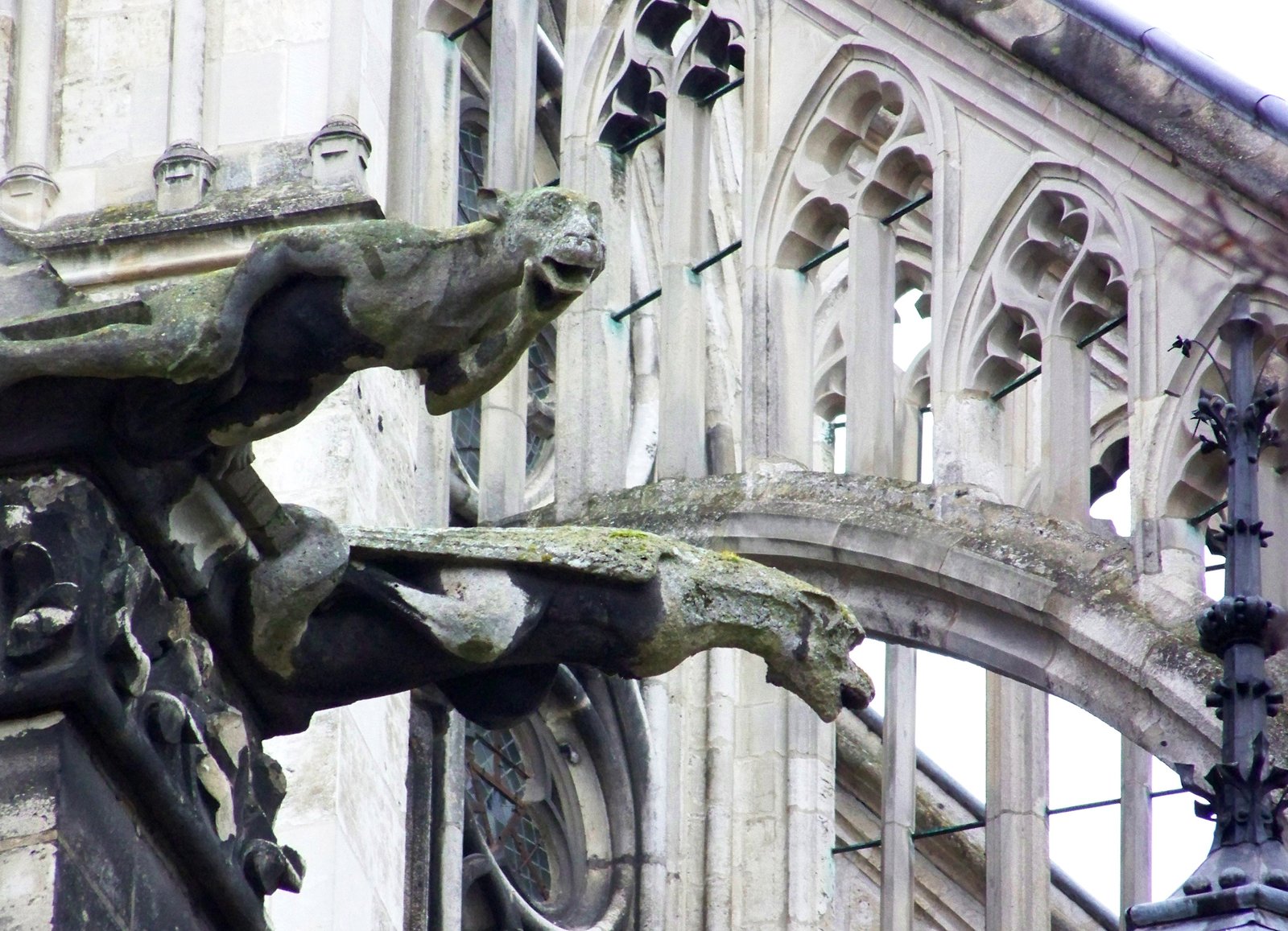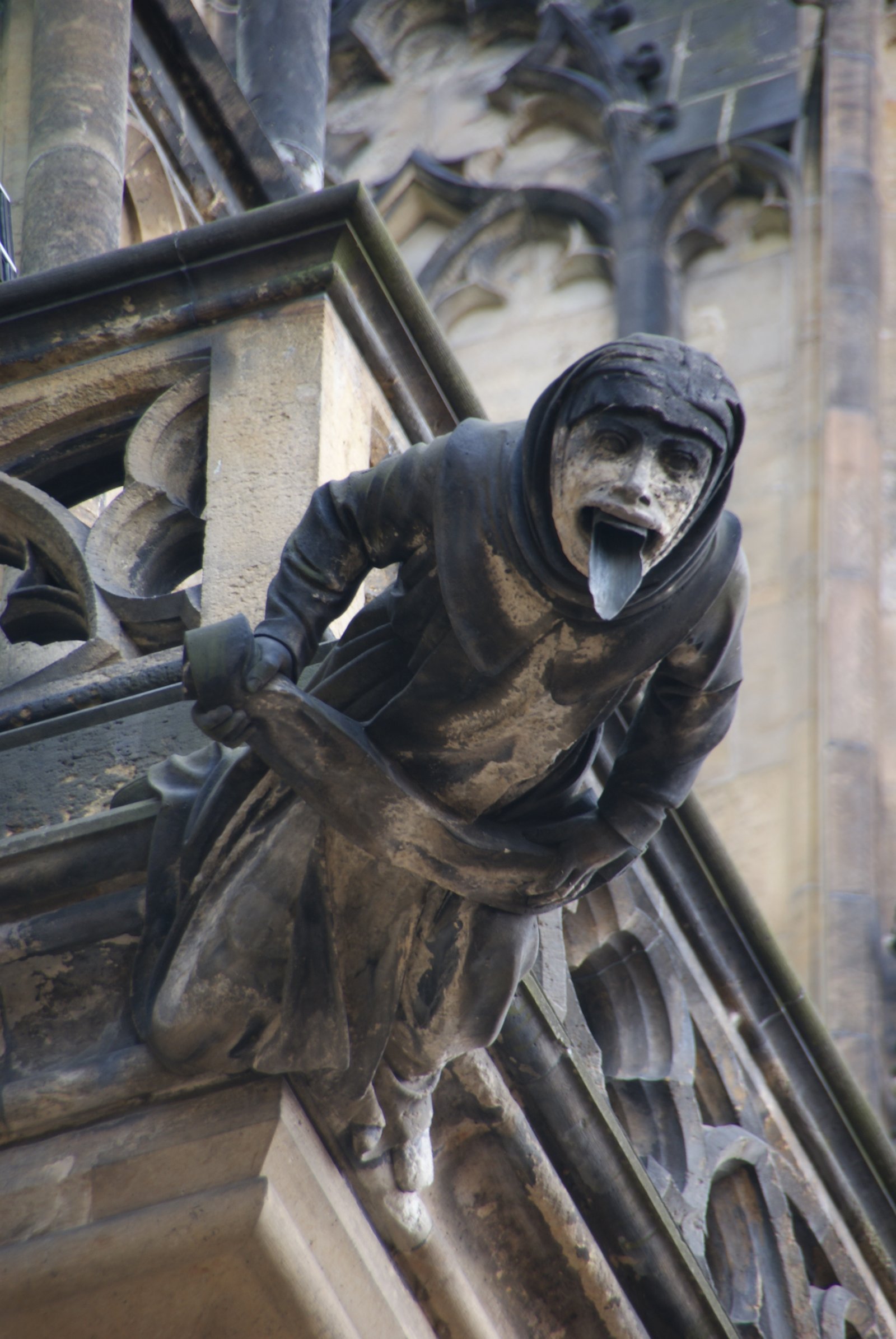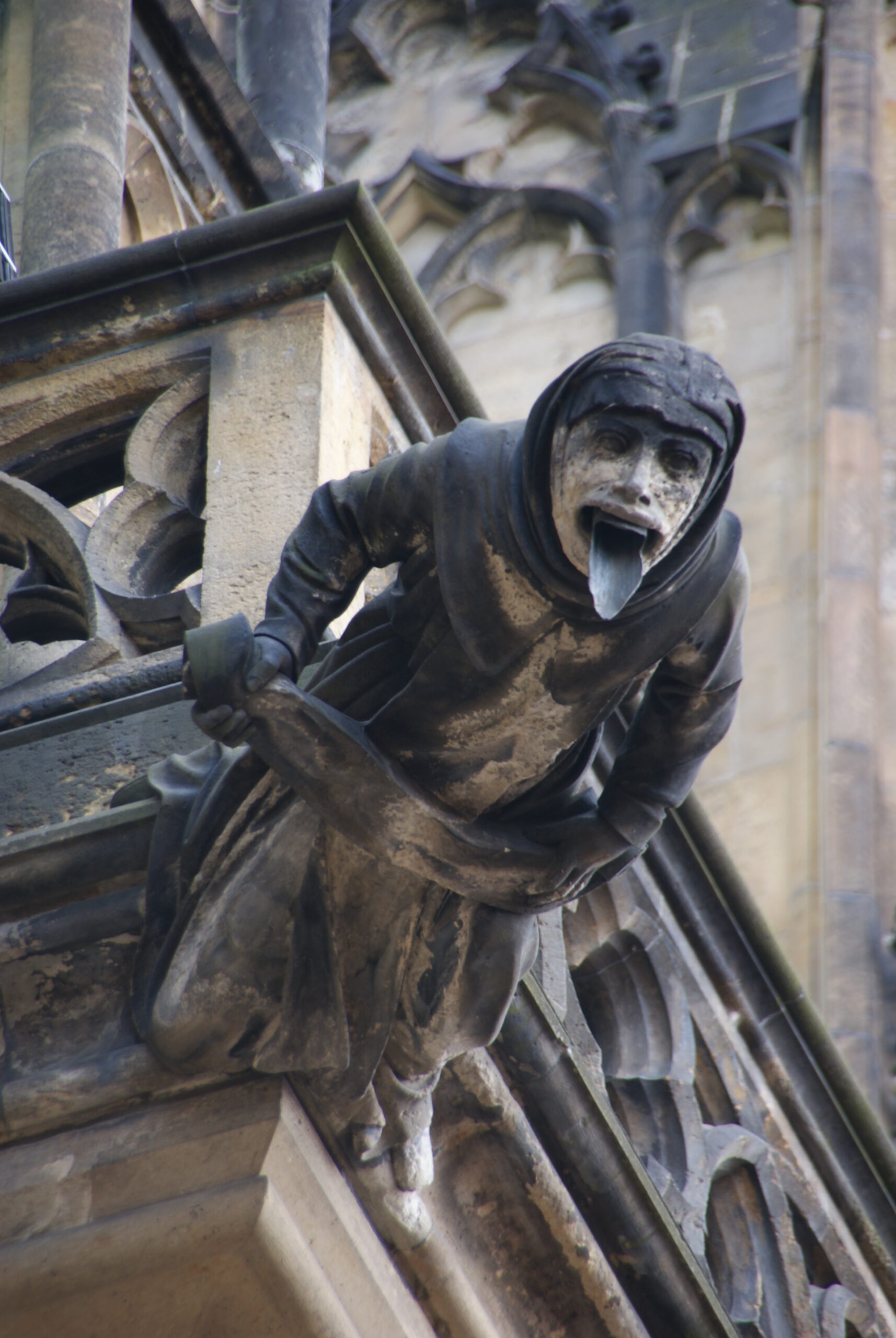Field Guide to Gargoyles, Part Three
Welcome back to the Field Guide to Gargoyles, your prime source for essential gargoyle information. In case you missed them, check out parts one and two. Now that we know what gargoyles are and where they came from, let’s go gargoyle hunting!
Where Can You Find Gargoyles?
To find an authentic medieval gargoyle or grotesque, it’s a good idea to start by going to church. (Not for divine assistance.) Gothic churches are the most common habitat of medieval gargoyles. As you’ll recall from our last episode, Gothic architecture was popular in Western Europe (France, the British Isles, Germany, and the Low Countries such as Belgium and Flanders) roughly between 1200 and 1500. University buildings, town halls, and similar public structures built in this style are also likely find spots.

If you seek Gothic Revival examples, churches and academic buildings are still your best bets, but pretty much any building in this style is worth a look. Even a few lucky Gothic Revival private homes might have their own resident gargoyle. The Gothic Revival began in England but soon spread to continental Europe and beyond. Therefore, don’t despair if you live on another continent. You may not be surrounded by scores of gargoyles and grotesques, but chances are good that some can be found in your country.

Eventually, buildings in other architectural styles began to include gargoyles and grotesques. Victorian train stations in India, Art Deco skyscrapers in New York, and Neo-Classical palaces in Sweden are just a few of the locations where they can now be found. Since gargoyle habitats are now so diverse, the easiest way to find them is by following others’ reports. Look on towers, in corners, and near other architectural details like window frames and decorative capitals.

No matter where you’re trying to find a gargoyle, it pays to look up. Gargoyles and grotesques are almost always placed above head height – sometimes very far above. Large Gothic churches, in particular, can have towers that are hundreds of feet tall, and their gargoyles often appear so close to the top that viewers can barely see them from ground level. Remember that close-up photos of famous gargoyles provide a very different view from that of passers-by.
Next week, we’ll talk about gargoyles’ many and varied appearances, including the quirky, fantastical, or bawdy characters they often portray. In the meantime, keep your eye out for a new series! Art Appreciation 101 will be a guide to understanding, enjoying, and appreciating art in all its many forms.
Read the rest of the Field Guide to Gargoyles here!

